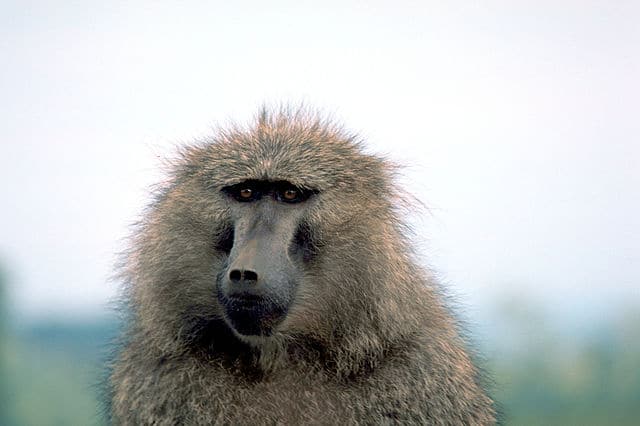According to the IUCN (International Union for the Conservation of Nature and Natural Resources or the World Conservation Union), over 1/3 of primate species are listed as critically endangered, endangered, or vulnerable (IUCN, 1996). Although primates are found in tropical and subtropical habitats such as woodlands and savannas, over 90% of primate species occur in tropical forests (Cowlishaw and Dunbar, 2000; Mittermeier and Cheney, 1987). Because primates are at their highest diversity in tropical forests, the loss of these forests is widely regarded as the process that most threatens primate species (Chapman and Peres, 2001; Mittermeier and Cheney, 1987; Southwick and Siddiqi, 2001). Growing human populations which are expanding into forest habitats and clearing forests for agriculture are the chief cause of forest loss (Cowlishaw and Dunbar, 2000). Commercial logging, subsistence harvesting of timber, mining, and dam construction are other human activities leading to forest loss in the tropics (Cowlishaw and Dunbar, 2000; Mittermeier and Cheney, 1987). Throughout their history, humans have utilized timber and converted forests to agricultural land.
However, the rate of forest loss has increased in the last 50 years (Cowlishaw and Dunbar, 2000). During the 1990s, 15.2 million ha were lost annually in the tropics (FAO, 2001). Recent data suggests that deforestation continues at an alarming rate- especially in primate habitats. From 2000-2005, South America lost 4.3 million ha of forest each year and Africa lost 4.0 million ha per year (FAO, 2005). These high rates of deforestation have resulted in the loss of more than 50% of the ancestral forest cover around the world (WRI/WCMC/WWF, 1997).
Above: Map indicating the the net changes in forest area 2000-2005 (note that all the areas in red – decrease of more than 50% – are in the tropics and the majority of the loss are prime habitat for primates. Taken form the FAO 2005 publicatuion: Global Forest Resources Assessment 2005; Progress towards sustainable forest management
The extinction risk faced by primates is exacerbated by characteristics of their biology. Many of the diurnal primates have a large body size (>5 kg). Large body size may increase extinction risk for primates due to two factors.
First, large primates are a more profitable target for human hunters compared to small primates (Cowlishaw and Dunbar, 2000). Second, their large body size imposes constraints on their life histories (Cowlishaw and Dunbar, 2000). Large-bodied primates have slow life histories- they require more time to reach sexual maturity and a longer period between births when compared to smaller primates. As a result, many large primate species cannot quickly replace members of their population who may be lost due to human activities such as hunting (Purvis et al., 2000).
In addition to the threat created by forest loss, there are other dynamics at work. Forest fragmentation, primate crop raiding, and hunting of primates for use in medicines, as pets, and for food also impact the ability of primates to survive into the future. These threats to primates are found throughout the world, but their extent varies based on local economic conditions, religions, and politics.










One Response
0.5